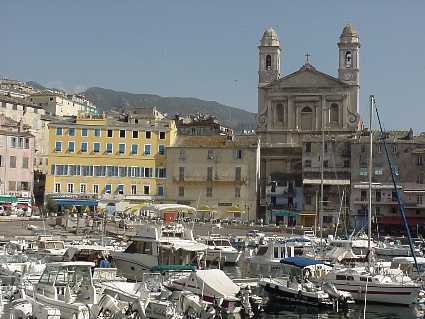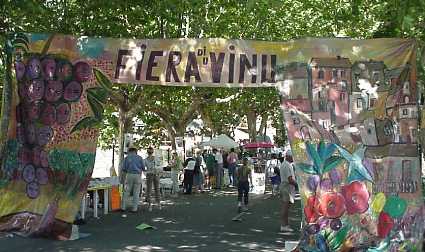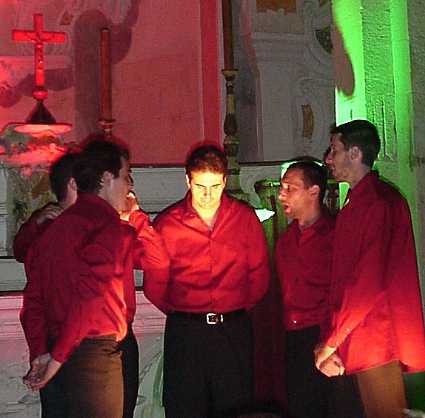 |
 |
 |
Corsica, the third-largest island in the Mediterranean, has been part of France since 1769. Captivated by its mild weather and striking landscape, summer vacationers outnumber the residents by six to one.
The island has retained much of its historical traditions and culture. The food reflects a blend of French influence and the natural habitat. Charcuterie corse often includes cured meat of wild boar (sanglier), whose staple foods include chestnuts. We've eaten the Corsican fish soup that resembles the bouillabaisse of the south coast of France. It's a ritual. The thick broth arrives with croutons, a raw clove of garlic, a spicy red mayonnaise called rouille, and grated cheese. Take the garlic and rub it on the bread, put on a dollop of rouille, drop into the soup, and sprinkle cheese. That's just a first course.
|
We made landfall at a small village called Macinaggio, so small that we needed to leave on the first bus out of town to replenish our French francs. Macinaggio has no bank and no cash machine for travelers. We went to the city pictured at right, Bastia. Bastia is one of the largest cities in Corsica, and was the capital of the island during the period of Genoese rule from 1347 to 1729. Bastia is the port of arrival for many visitors, and huge ferries enter and exit the port all day long. This is the Vieux Port, or old port, dominated by the Eglise St-Jean-Baptiste, with its two camponiles. |
 |
 |
Corsicans speak their own language, usually described as a dialect of Italian. The Corsican-language sign at left marks the entrance to a wine festival we visited, in the inland town of Luri. Notice the word vinu for wine instead of the French vin. Some Corsican wine regions have earned the appellation d'origine contrôlée designation of quality. Dozens of vintners were on hand, pouring glasses of their wines to anyone who wanted to taste them. There were other Corsican delicacies to taste at the festival, such as the local sweet cheese brocciu, honey flavored with the local scrub called maquis, chestnuts from the Castagniccia region, and many more. Musical groups provided entertainment all day, with a checkers tournament and a horse show. |
|
Les Polyphonies Corse, or polyphonic choral singing, is abundant on the island. The harmonic chanting began as a form of expression for shepherds and now represents an important element of Corsican culture. Generally, the music is performed a cappella (without musical accompaniment.) We were introduced to polyphonic singing at the wine festival, so we decided to see an entire concert, also performed in a church, when we visited St-Florent later. The songs are emotional and searing. Sometimes it seems that the music is being channeled through the singers, they concentrate so hard. The acoustics of the church created a powerful resonance, vibrating through the building. |
 |
 |
We were happily stuck in Calvi, due to high winds on the western side of Corsica. Calvi would look perfectly situated on the French Riviera: well-tended flowers on the harborside street, restaurant tables shaded with umbrellas, exquisite French meals, and yachts to ogle. Calvi possesses in one panorama nearly every physical attribute we've seen so far in Corsica. If you sit at a café and take in the sweep of the harbor, at your far left you see the citadel protecting the haute-ville or high city, then the marina and the harbor beyond, then the beaches on the other side of the harbor to your right, and finally the scrub-covered mountains that are so high we still saw snow on the top in the middle of July. |